ELECTRIC, WITH AN EDGE
The 34.5kV transformer is among the most overall ratings in the market.
This type of medium voltage transformer is crucial to bring power to consumers.
In this regard, a competent unit is of high necessity to ensure the smooth distribution of power.
Daelim Belefic understands this need and created a high-quality transformer unit that is both performance and cost-efficient.
Daelim Belefic is a renowned transformer manufacturer involved with numerous projects all over the globe.
With over 15 years of operation, the company has provided effective electrical solutions and products to answer electricity demands.
Daelim follows multiple standards to ensure product quality, involving ANSI, IEEE, and CSA standards.

High Voltage Distribution Transformer
-A lot of electrical companies use high voltage Distribution transformer to effectively operate at applications that are at high voltage levels.
The Complete Guide to 1000kVA Transformer
-In this article, you will be learning more about the 1000kVA Transformer, its specification, and its dimensions. Read on if this interests you.
Electric Pole Transformer | Single Phase Transformer
-Learn the fundamentals of Electric Pole Transformers, including What is pole mounted distribution transformer, pole mounted transformer specifications, pole mounted transformer drawing, pole mounted transformer sizes and custom options.
All transformers fall under the general rule of “transforming” electrical voltages through electromagnetic induction.
They can either step up or step down a voltage to meet rating demands for power distribution.
Different ratings exist to meet different application demands.
In the case of 34.5kV transformers, its role is to allow power transition from high to medium voltage consumption.
It can distribute power to consumers or another substation, depending on its role.
Technically, 34.5kV transformers fall under medium voltage classification, varying from the substation, pad-mounted, or pole-mounted types.
The substation transformer is the very core for any electrical substation operation. It is what converts the incoming voltage into usable ratings by the substation.
This device has two vital parts: a primary side transforms them from high to low/medium voltage, and a secondary voltage with lower voltage ratings.
For example, a 34.5kV to 480V transformer has a 34.5kV for the primary voltage and a 480 volts capacity for the secondary.
The governing standards for substation transformers follow the IEEE C57.12.00 and C57.12.36 standards.
It is common for substation transformers to be oil-immersed for matters concerning efficiency.
You can easily identify these transformers as fences enclose them with restricted personnel access.

Pad-mounted transformers are identifiable by their steel sheet encasement and concrete padding.
The encasement is necessary to protect the transformer from weather hazards and protect passersby from electricity.
They are the perfect solution for any electrical transformer installation with limited space and are often seen near public areas.
Generally, pad-mounted transformers have smaller ratings ranging from 45 to 5000 kVA.
Still, higher rating variants can exist depending on the manufacturers’ discretion or specific demand.
The design requirement for pad-mounted transformers also follows IEEE standards.
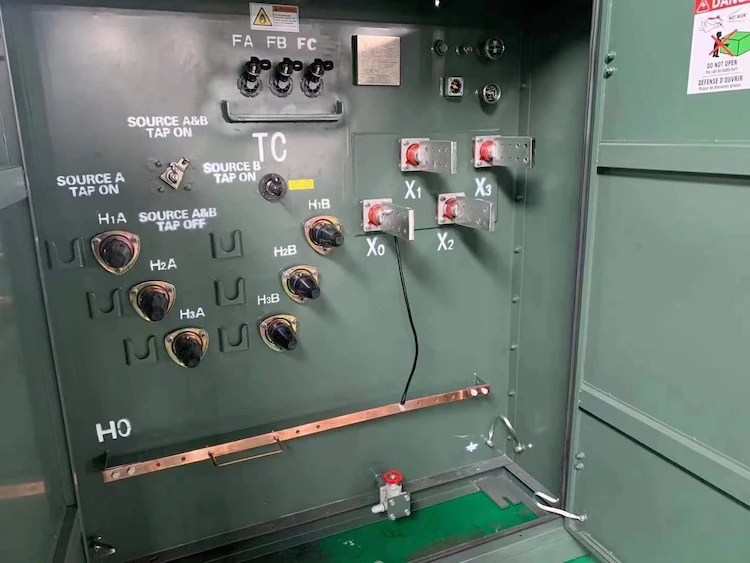
Pole-mounted transformers are the cylindrical components usually found atop electrical poles.
These transformer types are sealed in airtight cases and the end gateway for delivering power to consumers.
Most pole-mounted transformers have sizes ranging from 5kVA to 500kVA.
However, the overall sizes are 120/240V, which is the typical voltage use of households.
Pole mounted transformers also observe standards by IEEE.
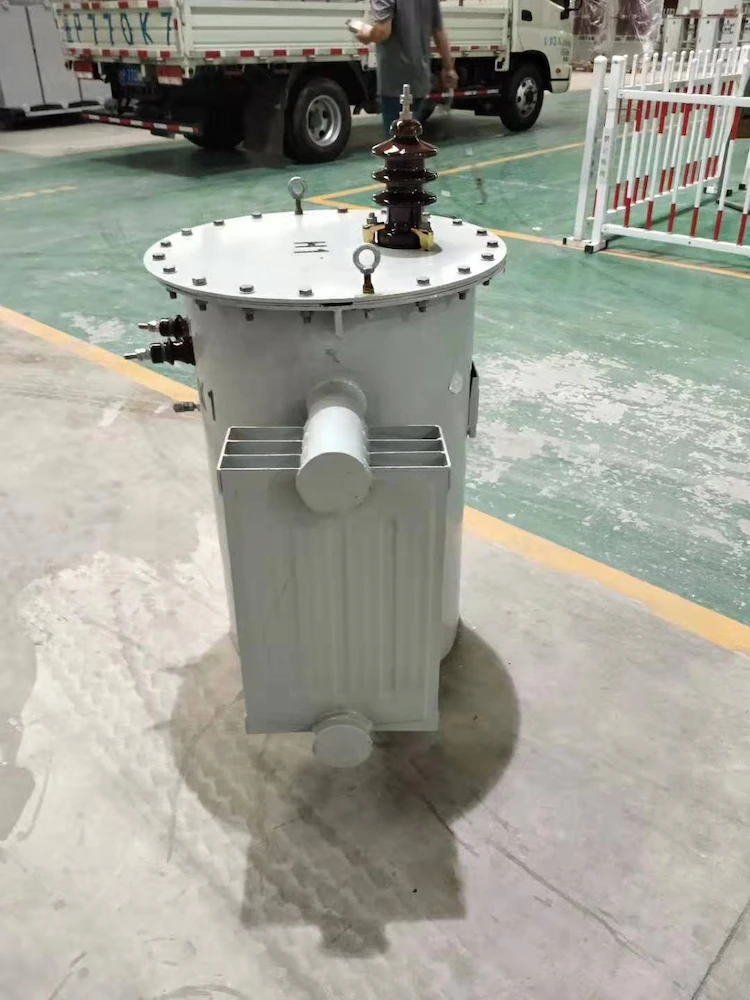
Different transformers can have varying specs depending on their manufacturer.
It is imperative to check the complete specifications of your transformers to ensure it fits your needs.
The specification below is based on general transformer manufacturing.
Most of which is employed by Daelim in manufacturing their 34.5kV transformers.
There are two prevailing phase designs in transformers: the single-phase and three-phase types.
The single-phase transformer utilizes AC in transforming voltages along a single wiring direction.
They’re often used to step down long-distance transmission currents into more suitable residential or light commercial applications.
Meanwhile, three-phase transformers use a delta or wye connection in transforming voltages.
It is considered more efficient than single-phase and is common for higher rating transformers.
For this reason, most 34.5kV and medium voltage transformers are in three-phase especially if used for stepping-up electricity for distribution.
Oil and dry-type are currently the popular options for transformer cooling.
The oil-cooled transformer uses oil or dielectric fluid in regulating transformer temperature.
Most of the oil-cooled transformers have compartment reserves for maintaining oil quality.
They are typically more efficient in cooling and have a longer lifespan than dry types.
ONAN is one example of oil cooling design which stands for Oil Natural Air Natural.
This method uses natural oil and airflow for electrical devices without pumpings, such as transformers or fans.
On the other hand, dry-type transformers use cast resin and natural ventilation to regulate temperature.
They are used for lower voltage ratings and are ideal for less demanding applications.
The two-winding transformer is a device that has two different wound coils.
One winding, known as the primary or input side, is linked from the power source.
While on the other hand, there’s the secondary winding with a different output depending on voltage requirements.
This is the most common configuration of transformer winding which delivers electricity into one input, one-output flow.
The electrical norm subdivides high, medium, and low voltage ranges. Technically, standard transformer ratings classify on the following voltage ranges:
Therefore, any transformers within the 1000V to 35kV are categorized as medium-voltage transformers.
Medium-voltage transformers are common along power distribution lines and used to step down power from medium to lower voltages.
They can also be used in the opposite direction, stepping up higher voltages to allow long-distance distribution.
Medium-voltage transformers are more suited for industrial, institutional, or commercial use than residential ones.
You may always consult your medium voltage transformer manufacturers to verify specific applications you have in mind.
Transformers are essential power for mining.
The miner’s transformer takes the medium to high voltages provided by substations and converts them into ratings low enough for mining.
Thus, you can use a medium-voltage transformer like 34.5kV for crypto mining.
However, transformer sizes are still subjected to depending on the demands of your crypto farm.
To get the best and most efficient device for your crypto farm power, you must consult electrical professionals.
After all, crypto mining can have different power requirements depending on how extensive the operation is.
kV stands for kilo-volts which is the unit for voltage capacity.
The first kV rating indicates the device’s input or primary load capacity in transformer specifications.
You can convert kilo-volt-amperes (kVA) to kilowatts (kW) by multiplying it by the power factor (PF).
See the formula below:
kW = kVA × PF
kVA indicates the apparent power while kW refers to real power.
Full load refers to the maximum possible current a transformer can operate.
It will be determined primarily by winding wire size and cooling method.
Others include factors such as frequency or temperature range in operation.
A 34.5kV transformer plays a vital role in power distribution.
High reliability and long-lasting performance are imperative among transformers.
This concern is especially emphasized for sensitive facilities like hospitals and manufacturing facilities where power consistency is highly concerned.
Moreover, you should also check the support services provided by your transformer manufacturer.
Only the professionals and trained experts shall be handling installations in your best interest.
And in a difficult-to-navigate market, you can only be at peace by choosing trusted brands like Daelim.
Be sure to check Daelim for quality transformers and similar electrical products and solutions.
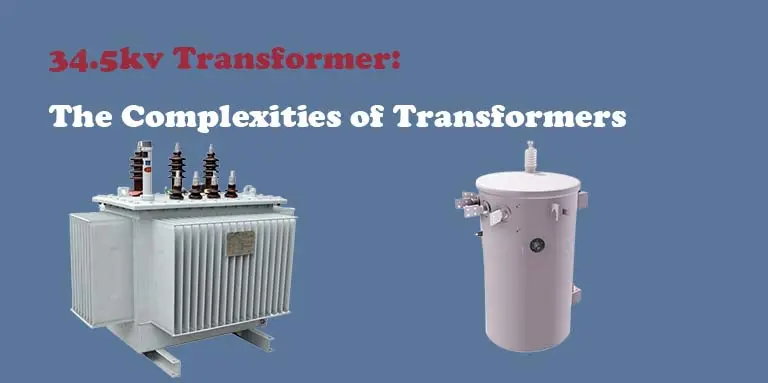
The 34.5kv transformer is a kind of oil-type transformer, which is generally divided into single-phase transformer and three-phase transformer.
A transformer is a static device that aids in the transition of electric power from one circuit to another circuit that has the same frequency as the original circuit. In a circuit, the voltage can be raised or dropped, but only if the current ratings are increased or decreased in a corresponding manner.
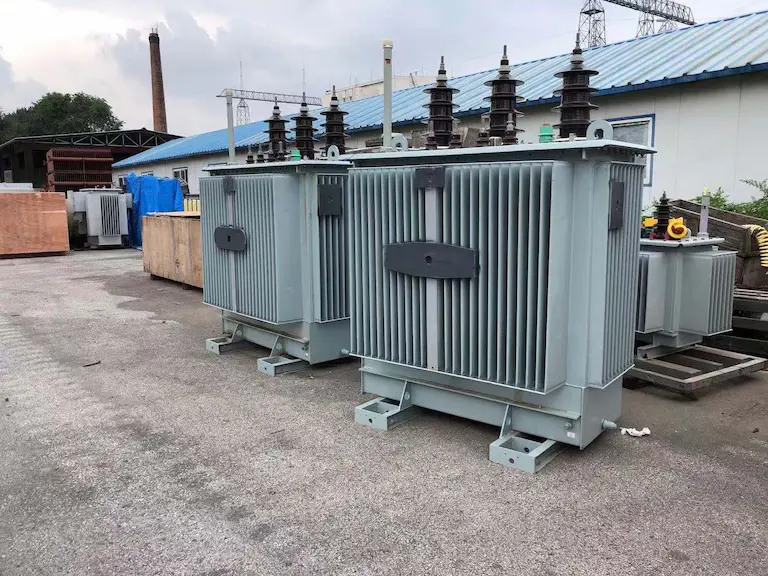
The 34.5kV transformer has one of the highest overall ratings of any transformer on the market. This particular sort of medium voltage transformer is critical in delivering electricity to consumers.
In this regard, a competent unit is critical in order to ensure that power is distributed in an efficient manner.
Daelim recognizes this need and has developed a high-quality transformer unit that is both efficient and effective in terms of performance.
Daelim is a well-known transformer producer that has been involved in a variety of projects all around the world.
A dry type outdoor service current transformer with a voltage of 34.5kV is possible. Typ B epoxy resin is typically used to cover and protect the core because of its superior dielectric qualities and mechanical robustness on the inside of the core.
In addition to providing resistance to ultraviolet rays and the effects of tracking and erosion on the exterior of the transformer, the Cycloaliphatic Epoxy Resin (CEP) coating on the transformer’s interior ensures a long mechanical and electrical life. The transformer does not require any maintenance.
Moreover, the external layer can be made of Hydrophobic Cycloaliphatic Epoxy Resin (HCEP), which has a longer service life expectancy than conventional epoxy resins due to its superior tracking and erosion resistance properties. Aside from improving weatherability, HCEP also results in improved performance in extremely polluted conditions, according to the manufacturer.
Additionally, the core is constructed from grain oriented silicon steel laminations with excellent permeability and low loss for low losses. Copper wire is used in the windings, with copper plate double isolation between them.
Magnetic flux leakage is avoided due to the concentric distribution of the coils, resulting in improved accuracy and increased ability to bear mechanical stress under challenging operational situations.
To provide some context, this 34.5 KV subtransmission system is derived from a 69-KV transmission station, which is described further down.
There are two delta to wye transformer banks in this substation (the source substation).
The voltage drops from 69 KV delta to 34.5 KV wye. On each transformer, the wye-connected windings are grounded to the station grid only, and nothing else.
There is no system neutral when leaving the station and moving together with the lines in the train system.
Hence, the output of each transformer is a single 34.5 KV transmission line.
Lines A and B are intertwined. These two lines run parallel to one another on the same buildings and stop at a variety of stations along the way.
Further, this subtransmission system consists of five distribution substations that are interconnected.
The two lines are eventually connected together by a tie circuit breaker at the 34.5 KV substation that is the furthest away from the source of the voltage (34.5 KV to 13.8 KV).
This results in the creation of a loop scheme that connects two of the five 34.5 KV substations together in a loop. The remaining three 34.5 kV substations are fed by radial feeds from line B, which is the main transmission line.

Transformers are required for mining operations because they provide the necessary electricity.
Taking the medium to high voltage supplied by substations and converting them into ratings low enough for mining is the function of the miner’s transformer.
You can therefore mine cryptocurrency using a medium-voltage transformer, such as one rated at 34.5kV.
Transformer sizes, on the other hand, are still subject to change based on the demands of your crypto farm.
Thus, electrical professionals should be consulted in order to obtain the greatest and most efficient gear for your crypto farm’s power needs.
Because of this, the amount of electricity required for crypto mining can vary based on the size of the operation being performed.
Indoor and outdoor applications for pad mounted transformers are possible.
There are several applications for it in a variety of settings including apartment complexes, villas, office buildings, residential residences, industrial and mining companies, commercial centers, urban communities and other locations.
• Compact structure, tiny volume, and just a third of the capacity of a compact substation are available.
• Personal safety is assured by a building that is completely sealed and insulated.
• It is possible to use a terminal or a ring main unit mode, which is both flexible and convenient.
• Other features include double fuse safety, reduced noise and loss, a dependable power supply, and others.
• It is possible to equip it with a fully shielded and fully insulated elbow arrester that is simple to install.
• It has the ability to penetrate into the load center while maintaining a low operating cost.

The primary voltage of a 34.5kV to 480V transformer is 34.5kV and the secondary voltage is 480 volts.
For reasons of efficiency, transformers at substations are frequently submerged in oil. Fences around these transformers prevent access, making it easy to identify them.
In industrial facilities in the United States, the most typical power system is 480V phase.
In the eyes of the American National Standards Institute (ANSI), 208V, 240V, and 480V 3 Phase power systems are all low voltage power systems.
Medium, High, Extra High, and Ultra High Voltage (up to 1,100,000V) are ANSI voltage classifications that are not to be confused with each other.
Additionally, because most of us are accustomed to working with voltages in the 120V and 240V range, referring to 480V as “low voltage” sounds absurd.
Without working in power distribution or at a large industrial site that requires more than 4 Mega Watts, you will not be aware of higher ANSI voltage classes.
At 480VAC input, these Three-Phase transformers deliver voltage conversion that is smooth and steady.
In order to cut operating expenses, lower ownership costs, boost profitability, and reduce overall greenhouse gas emissions, transformers with a rated power of 15 kVA and greater must comply with DOE 2016 law.
Transformers with a rating of 1500 kVA are considered to be among the industry standard. This grade is widely used by professionals for applications involving low to medium voltage.
A wide range of applications are available, ranging from residential to small- to medium-scale industrial.
This post by Daelim will cover every aspect of 1500 kVA transformers that you should be aware of before purchasing one.
Furthermore, in order to provide high-quality products at an accessible price, we have established a price range.
As a result, in just a few years, Daelim has already established itself as one of the most successful electrical producers in the country and around the world.
Consequently, if you require an electrical solution, you can rely on Daelim to provide it.
When it comes to transformers, impedance is the current limiting property that is stated as a percentage.
When the secondary winding is short circuited, this percentage shows the amount of normal rated primary voltage that must be delivered to the transformer in order for it to produce the full rated load current when the primary winding is normal rated.
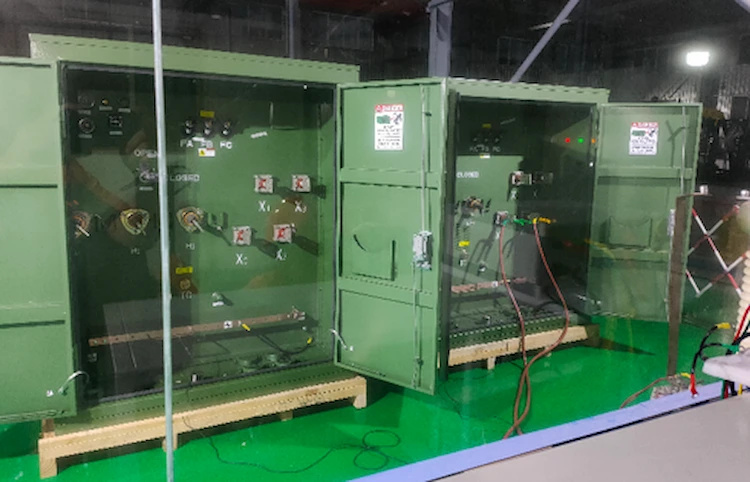
The transformer with a capacity of 1500 kVA is specifically designed to accommodate a load span.
The unit kVA stands for kilovolts-amperes, and it refers to the perceived power of the transformer in volts-amperes.
As a result, the rating of 1500 kVA suggests that this transformer is capable of holding any apparent power that is less than 1500 kVA.
However, there are some thresholds that must be considered in the electrical business that may have an impact on the transformer’s power holding capability.
As a result, always check with your local manufacturer or an expert to ensure that this is the case.
Furthermore, manufacturers use a variety of materials and techniques to construct their transformers.
Additionally, it has the same changes in its capacity and other other parameters as before.
It’s possible that you’ll want to take it into consideration before purchasing one.
Subsequently, a 1500 kVA transformer can be classified as either step-up or step-down, depending on the relationship between the voltage input and the voltage output.
Step-up transformers are defined as devices in which the voltage output should be greater than the voltage input, hence the term “step-up.”
In contrast, “step-down” transformers, in which the output voltage is lower than the input voltage, provide the opposite effect.
However, please keep in mind that the transformer can only convert between different voltages.
Electrical power and voltage are not to be confused, as they are two entirely different units of measurement in the world of electricity.
Volts are used to measure voltage, and watts are used to measure electrical power.
It is possible to compute the impedance of a transformer by measuring the voltage drop across a winding when it is fully loaded due to winding resistance and reactive leakage.
The impedance is represented as a percentage of the transformer’s rated voltage.
When it comes to transformers, their impedance is the complete opposition they provide to alternating current.
This is something that can be calculated for each winding.
A relatively easy test, on the other hand, gives a realistic means of measuring the equivalent impedance of a transformer without having to separate the impedance of the transformer’s windings.
Applying a sinusoidal voltage in series with a resistor to a device and measuring the voltage across the resistor and across the device can be used to determine the impedance of the device.
The impedance phase and magnitude are determined by sweeping the applied signal’s frequencies, which is accomplished through this measurement.
The percentage impedance of a transformer has a significant impact on the level of system faults.
It establishes the maximum amount of current that will flow in the event of a fault scenario.
It establishes the maximum amount of current that will flow in the event of a fault scenario.
Transformer test facilities, instrument transformer test facilities, national meteorological institutes, and a slew of other places rely on Daelim standard voltage transformers.
Their inductive nature has been well-established for many years, and they’re still widely used in the business today.
High voltage is reduced to a detectable 100 V or 110 V by the devices. A wide range of primary and secondary voltages are available to meet the needs of all customers.
There are single- and double-pole models ranging in voltage from 500 V to 800/3 kV.
• Up to 0.005 percent and 0.5 minutes of precision
• Any primary tap can be calibrated for a measurement range of 40–120 percent of the rated voltage, allowing for a measurement range of 20–120 percent.
• Long-lasting and dependable, with a 30-plus-year service life estimate.
• Over the instrument’s lifespan, there will be no drift or loss of precision.
• Models available in dry insulation, cast resin insulation, and oil insulation.
• An integrated device for models up to 100 kV. It is common for larger models to be created in a cascade configuration, but the lower cascade can be run independently.
The primary operating concept of a transformer is mutual inductance between two circuits that are coupled together by a shared magnetic flux.
Two inductive coils that are electrically distinct but magnetically coupled by a path of reluctance form the basis of a basic transformer.
Depending on their application, transformers can be used to either increase the voltage, which is known as stepping up the voltage, or reduce the voltage, which is known as stepping down the voltage.
ELECTRIC, WITH AN ENGE-- DAELIM BELEFIC
After filling in the contact information, you can download the PDF.